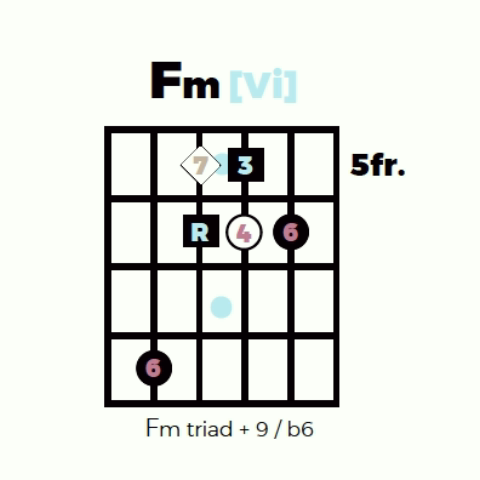
Solo Flight [7] Billy Strange
Are we trying to be unnecessarily fancy? Nah, it’s simply a compact but comprehensive overview to study how major and parallel minor keys are related – slowly, no need to attempt to learn everything at once.
The scale overview shows resolution tendencies, a gravitational map of sorts. The chord diagram should drive the message home. E.g. you can see how and why the Vi chord is closely related to the I chord and thus one of the tonic functions. It’s build from two ‘tonic notes’ [ R and 3 ] of the parent major scale and one ‘subdominant note’ [6]. The characteristic ‘Aeolian’ sound [9/b6] is achieved by adding notes from dominant and subdominant functions.
Seeing and hearing relationships along those lines – in context – helps to use a scale or sound more deliberately. In short, it’s easier to cook up a story if you know what the ingredients do
These are meant to be a guidelines which you can tweak to fit your personal, musical ’navigation’. The ideas are based on questions I received, don’t hesitate to ask further in case more questions come up.
Then, if the theory part gets too confusing, go back and review the etude at the beginning, it’s an applicable example how to outline Aeolian and Dorian colors as well how to create a secondary dominant – by only changing one note of the parent scale.

